Original compilation: ChinaDeFi
Original compilation: ChinaDeFi
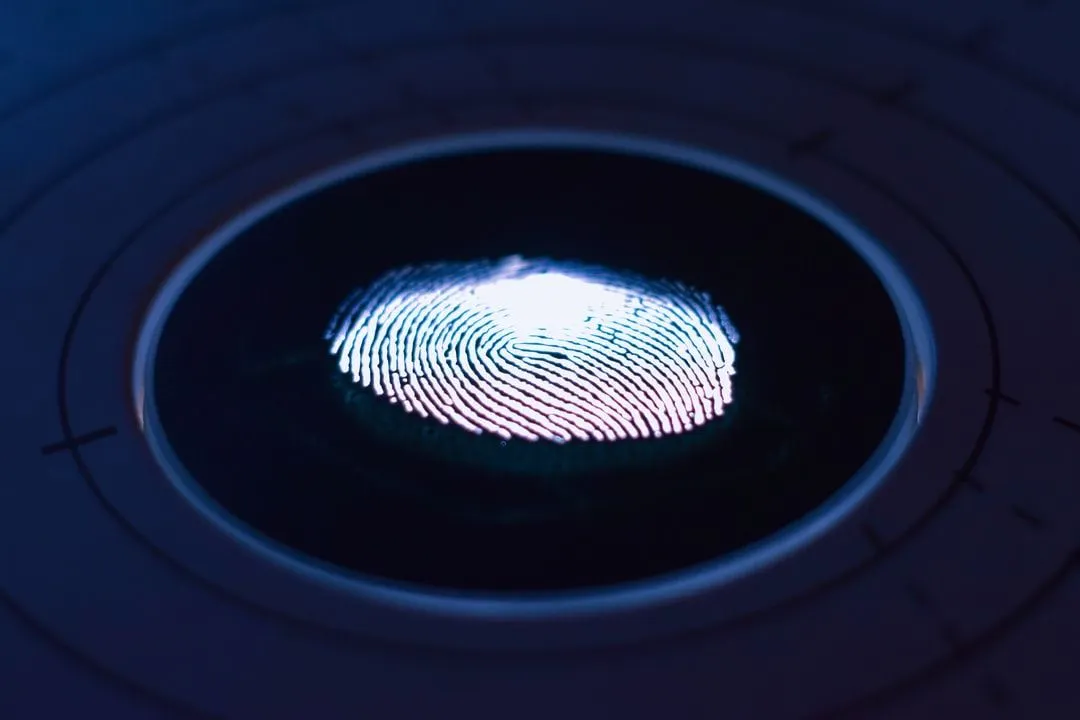
NFT has become a widely accepted project in the blockchain field.
Its total market cap is over $10.5 billion, according to coinmarketcap, and the trend is expected to grow to over $147 billion by 2026.
In addition, "NFT" has also become the word of the year in the 2021 Collins Dictionary.
NFTs (Non-Fungible Tokens) are a rare type of blockchain-based tokens that, due to their different characteristics, cannot be exchanged for another token.
A creator can create 5 NFTs; but this does not mean that all 5 NFTs are the same and interchangeable.
first level title
What is NFT rarity?
Have you ever wondered why some NFTs are worth millions of dollars while others are worth nothing?
Do you also think that the market determines the value of NFT?
Many people mistakenly believe that these are the reasons for the rising value of NFTs.
rarity
rarity
The rarity of NFT determines the value of this collectible.
Most collectors want rare NFTs, because the rarer the collectible, the higher the price.
first level title
So, how do we calculate the rarity of an NFT?
We can easily determine the rarity of two different NFTs from different collectors, for example, Okay Bears and Bored Ape Yacht Club.
However, when it comes to having a few hundred NFTs, the overall rarity of each NFT is determined by comparing the properties of each NFT in the collection.
This total rarity is determined by finding the rarest attribute or by a statistical rarity assessment. The fundamental consideration is always based on the overall characteristics of the NFT, rather than a single attribute; this prompted Rarity Tools to develop a method for determining "rare value".
The attributes or characteristics that need to be considered are usually physical attributes, such as clothing, earrings, fur, hats, glasses, backgrounds, necklaces, etc. The reason these are used as metrics is because it is impossible for all NFTs in a single collection to have all attributes at the same time; This makes them irreplaceable.
There are four different methods used to calculate the rarity of an NFT. When compared with each other, some methods are considered to be inferior because they only identify one characteristic and ignore other factors.
The methods used are:
Feature Rarity Model
Average feature rarity model
Statistical rarity model
Score rarity model
Feature Rarity Model
This ranking model examines the rarest features of NFTs as a comparison tool. For example, let's compare the following Ape classes:
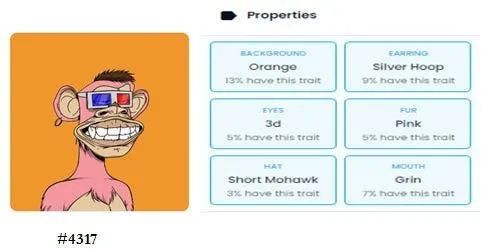
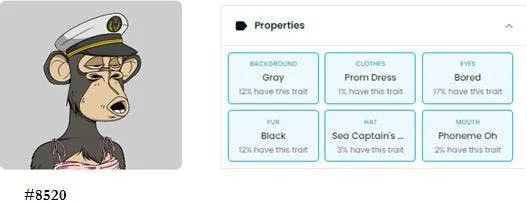
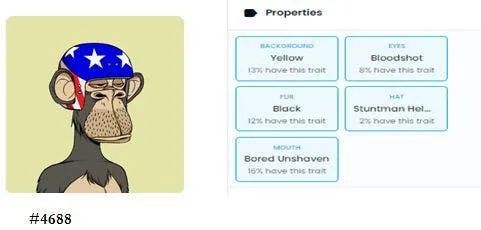
From top to bottom:
The rarest characteristic of Ape#4317 is the short Mohawk, only 3% of them are characterized by this.
The rarest feature of Ape#8520 is the ball gown, only 1% feature it.
The rarest feature of Ape#4688 is the Stuntman helmet, only 2% feature it.
With the "Rare Traits Model", the orders would be #8520, #4688 and #4317.
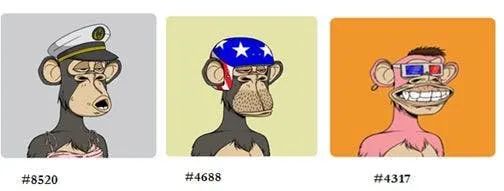
A limitation of this model is that it does not take into account the overall characteristics of the NFT; only the rarest qualities are considered.
Average/average feature rarity model
The model uses an average or averaging method to calculate the rarity of an NFT. It considers all the features and uses an average method to determine the features of a particular NFT before comparing them.
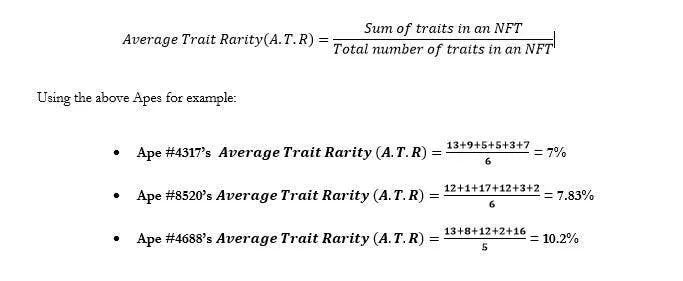
So following this model, Ape#4317 has the rarest trait, followed by Ape#8520 and Ape#4688.
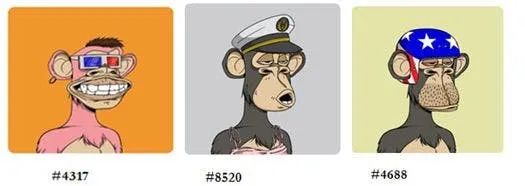
A limitation of this model is that it does not take into account whether NFTs have very rare individual characteristics.
Statistical rarity model
This model incorporates average rarity; however, it differs from the average model in some ways. The overall rarity of an NFT is calculated by multiplying all the characteristics of such an NFT.
Or the above example:
Ape#4317 = 13% * 9% * 5% * 5% * 3% * 7% = 0.000000061425%
Ape#8520 = 12% * 1% * 17% * 12% * 3% * 2% = 0.000000014688%
Ape#4688 = 13% * 8% * 12%* 2%* 16% = 0.0000039936%
So in this model, Ape#8520 has the statistically rarest trait, followed by Ape#4317, and then Ape#4688.
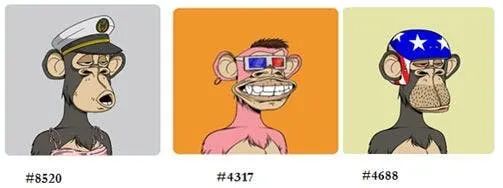
Score rarity model
This model is similar to the feature rarity model, but it is usually calculated as a fraction, whereas feature rarity is usually calculated as a percentage. The rarity scoring model is one of the easiest and most reliable ways to evaluate the rarity of NFTs. Most NFT sites use it.

The total rarity score of a particular NFT is the sum of the rarity scores of all features in the particular NFT.

Take the previous Ape as an example:
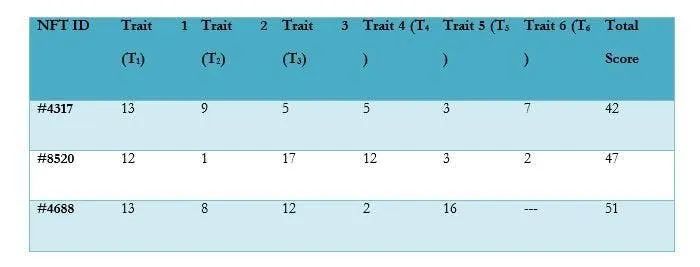
in conclusion
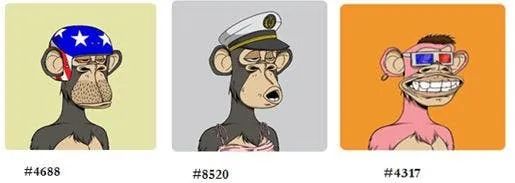
in conclusion
As shown and demonstrated above:
Rarity refers to the rarest traits.
Average features and statistical rarity take into account common features in NFTs.
Scoring rarity measures NFTs by considering both individual rare and common features.
It is worth noting that the value of NFT varies according to different NFT communities.
The CryptoPunks community prioritizes "property count" to rank NFTs.
Waifusion's community puts "clothes and style" first.
Therefore, each community has its own priority selection to rank NFTs.
One might wonder why go to such lengths to determine the rarity of an NFT - knowing how rare a collectible is is part of our due diligence. It helps in deciding what to buy and which product will generate a higher return on investment.
Original link
Rarity tools
Etherscan Token Tracker
Rarity sniper
Traitsniper
HowRare
Icy.tools



